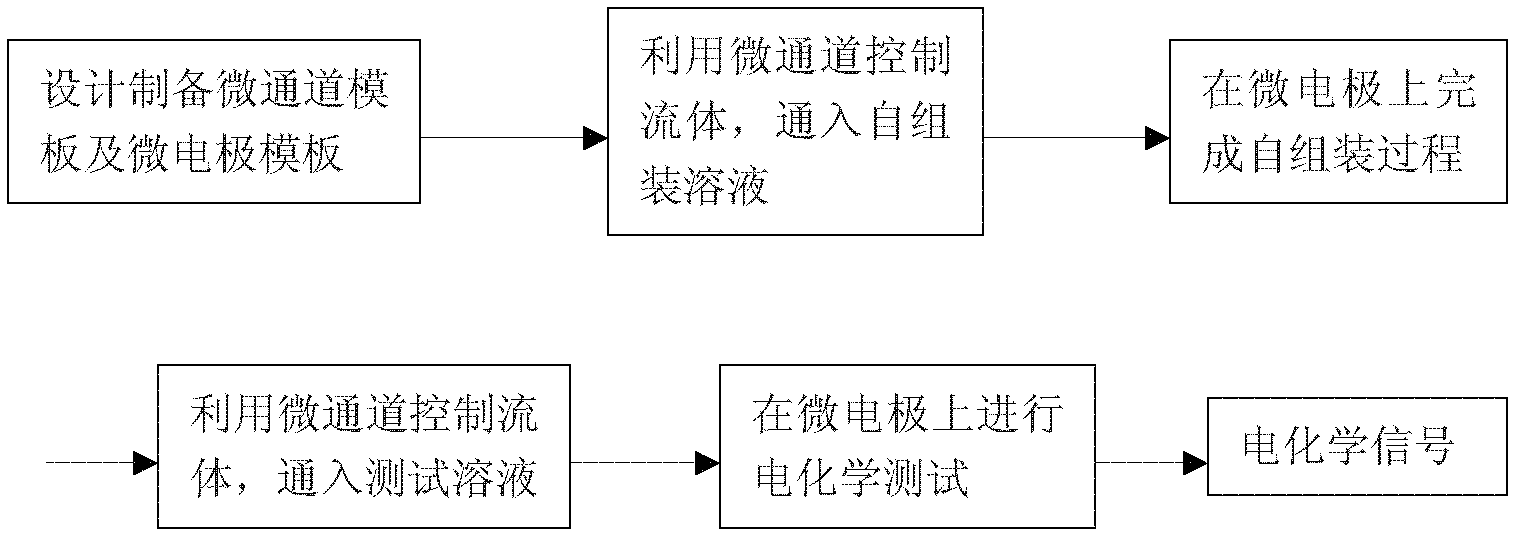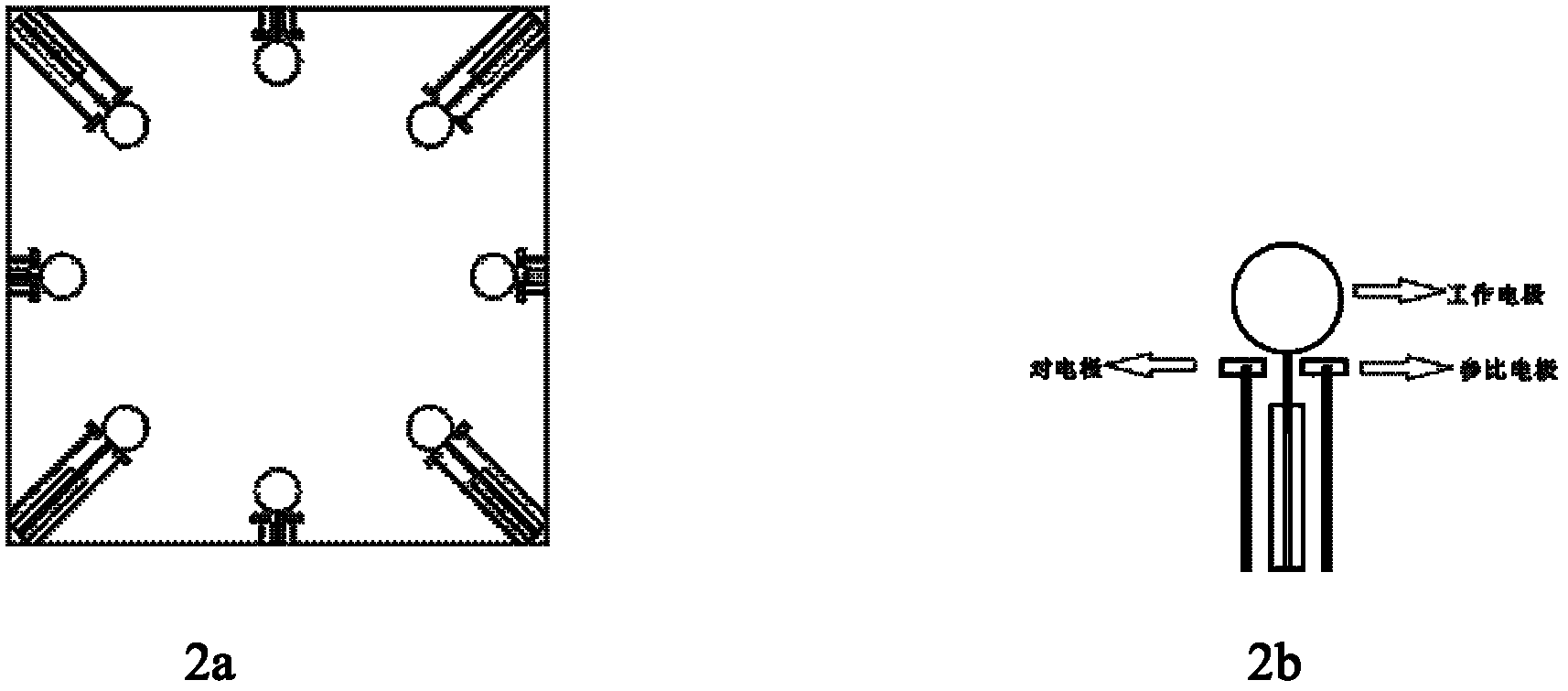Method for designing and preparing electrochemical detection-microfluidic multichannel chip based on self-assembled monolayer technology
A self-assembly technology and microfluidic channel technology, which is applied in the field of electrochemical detection-microfluidic multi-channel chip design and preparation, can solve the problem of single application of microelectrodes, achieve small sample consumption, expand application fields, cost reduction effect
- Summary
- Abstract
- Description
- Claims
- Application Information
AI Technical Summary
Problems solved by technology
Method used
Image
Examples
Embodiment 1
[0039] Detection of Cu in solution using self-assembled L-cysteine 2+ ion concentration.
[0040] L-cysteine (L-CySteine) is one of the 20 important amino acids in nature and has good electrochemical activity. At the same time, the L-cysteine molecule contains a very active sulfhydryl group (-SH), which is easy to adsorb on the surface of the gold electrode by forming Au-S bonds to form a self-assembled film. According to a number of literature reports, L-cysteine for Cu 2+ The ions coordinate very well, resulting in selective electrical signals.
[0041] In this experiment, L-cysteine was self-assembled on the surface of gold electrodes through microchannels, and then the 2+ Electrochemical detection of ions in the solution to be tested. In this experiment, an 8-electrode chip and an 8-electrode microchannel were used.
[0042] Electrode cleaning: pass 0.5M H into the microchannel 2 SO 4 solution, and perform cyclic voltammetry scanning in the range of -0.2 to ...
Embodiment 2
[0048] The characteristic sequence was detected by self-assembled thiol DNA probe, and methylene blue (MB) was used as indicator.
[0049] In DNA electrochemical biosensors, single-stranded DNA molecules of known sequence (referred to as DNA probes) are immobilized on electrodes, and selectively recognize the target DNA (cDNA) sequence in the sample according to the principle of complementary base pairing. The hybridization process was monitored electrochemically. In this experiment, MB was used as an indicator, because MB has a special affinity for guanine in single-stranded DNA (ssDNA), and its interaction with guanine reduces the electron transporter, resulting in a decrease in the peak current; but when hybridization forms double When stranded DNA (dsDNA) is added, the free guanine on the electrode surface no longer binds to MB, and the peak current increases significantly. Therefore, the detection of characteristic DNA sequences can be achieved through this principle of ...
PUM
 Login to View More
Login to View More Abstract
Description
Claims
Application Information
 Login to View More
Login to View More - R&D
- Intellectual Property
- Life Sciences
- Materials
- Tech Scout
- Unparalleled Data Quality
- Higher Quality Content
- 60% Fewer Hallucinations
Browse by: Latest US Patents, China's latest patents, Technical Efficacy Thesaurus, Application Domain, Technology Topic, Popular Technical Reports.
© 2025 PatSnap. All rights reserved.Legal|Privacy policy|Modern Slavery Act Transparency Statement|Sitemap|About US| Contact US: help@patsnap.com



